I got my first camera in 1966, it was a plasticky grey Ilford Sprite. I took mostly terrible photos on this little camera, but some were quite good, capturing the look of the time in swinging London. The Ilford gave way to something more substantial in my teens when I got a Leica IIIC with 3.5 Elmar. I was into street photography at the time, and wandered the West End of London looking for interesting subjects. I got some good snaps, sometimes selling my pictures to the tabloids if I got something interesting. The Mirror usually brought the whole roll unseen once they got to know you.
A few years later I got a Nikon F and then moved into digital with a Sony, and then a Canon. I always regretted selling my analogue gear and started to think about film cameras again. I suppose I wanted to recapture something of the more visceral experience and different mindset of shooting with film again. I looked through the photographs of British artists in Lord Snowdon’s book “Private View” and lust loved the grain in the monochrome pictures (get a copy if you can).
I was hooked again. After looking up some film cameras on Ken Rockwell’s site I took the plunge and got a Canon AE1 Program with a 50MM 1.8 FD lens. The camera was in OK condition for £60 but the lens had seen better days with touch of fungus, though it was usable. I loaded it with my usual Ilford HP5 of yore and headed out into Edinburgh to get going.
What attracted me to the Camera was its simplicity, plentiful spares and the number of repair outfits who could fix it if it went wrong. It’s nice and chunky in the hand and of course it has a full Program mode – hence the name. You just set the shutter speed and lens to the little green A and off you go. Program is a good option if you just want to concentrate on your subject and seems to work fine for most situations. Focussing is pretty easy, and you have the assistance of the split finder too. Of course, you can also do aperture priority and shutter priority or go the full manual if the mood or your subject needs it. The exposure meter in the camera is somewhat primitive but perfectly functional – and an external light meter is of course always an option.
My first assignment with the camera was the local bike shop (Gamma Transport division in Stockbridge, Edinburgh) to take some pictures of Gavin in the shop. The lighting there was sharp natural daylight. My first role was just a test roll to check everything out as I no longer develop my own film. I sent off the film to Peak Imaging in Sheffield. A week or so later the negatives came back together with the scanned images in low, medium and high resolution. I will let you make up your mind on the results, but I was chuffed by what I saw.
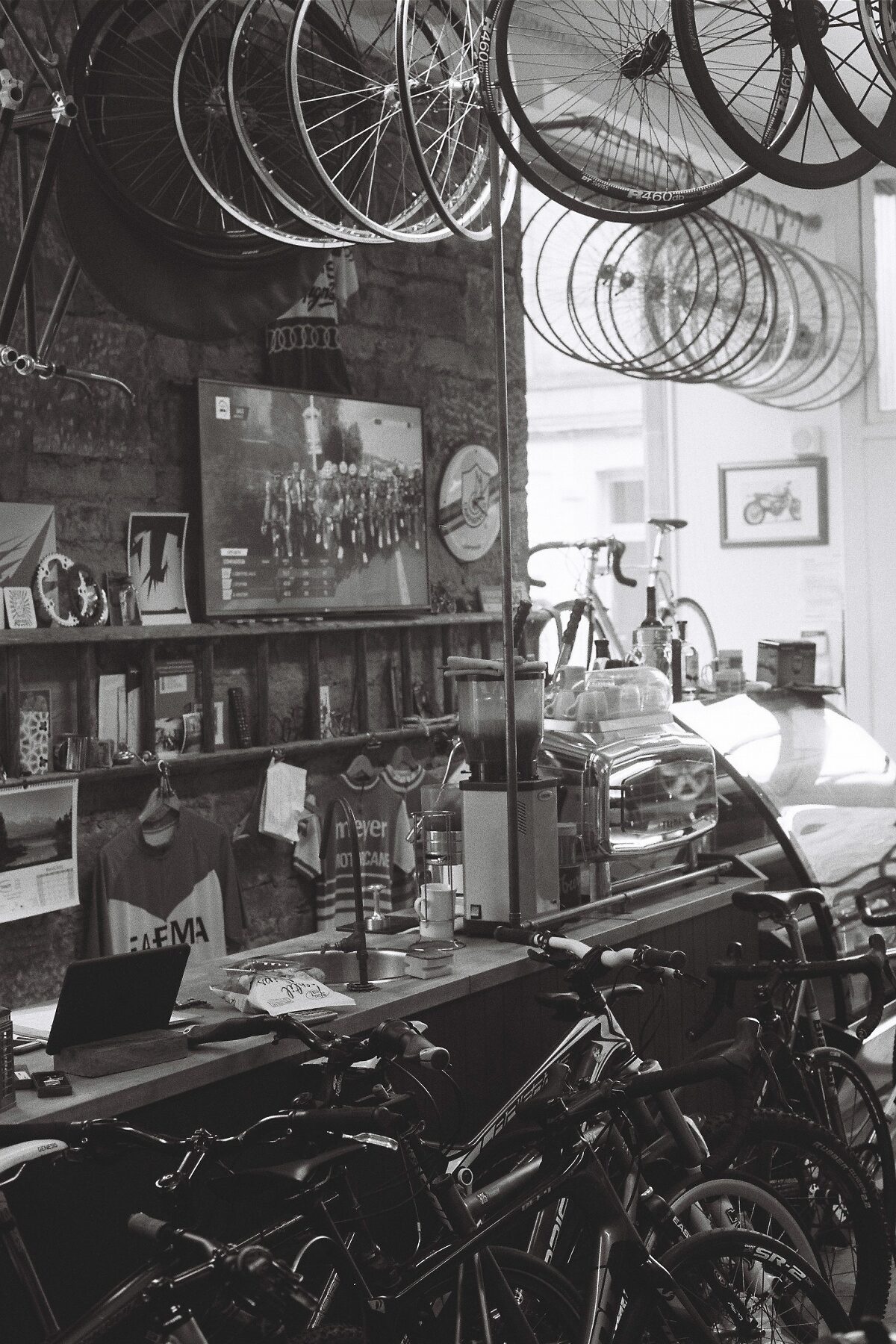
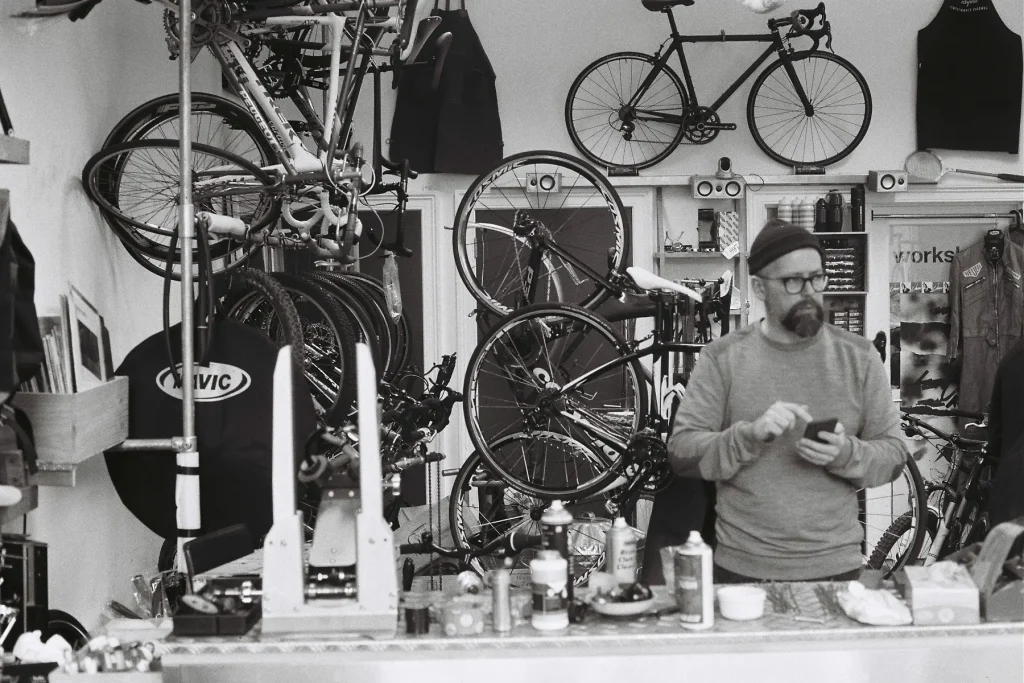
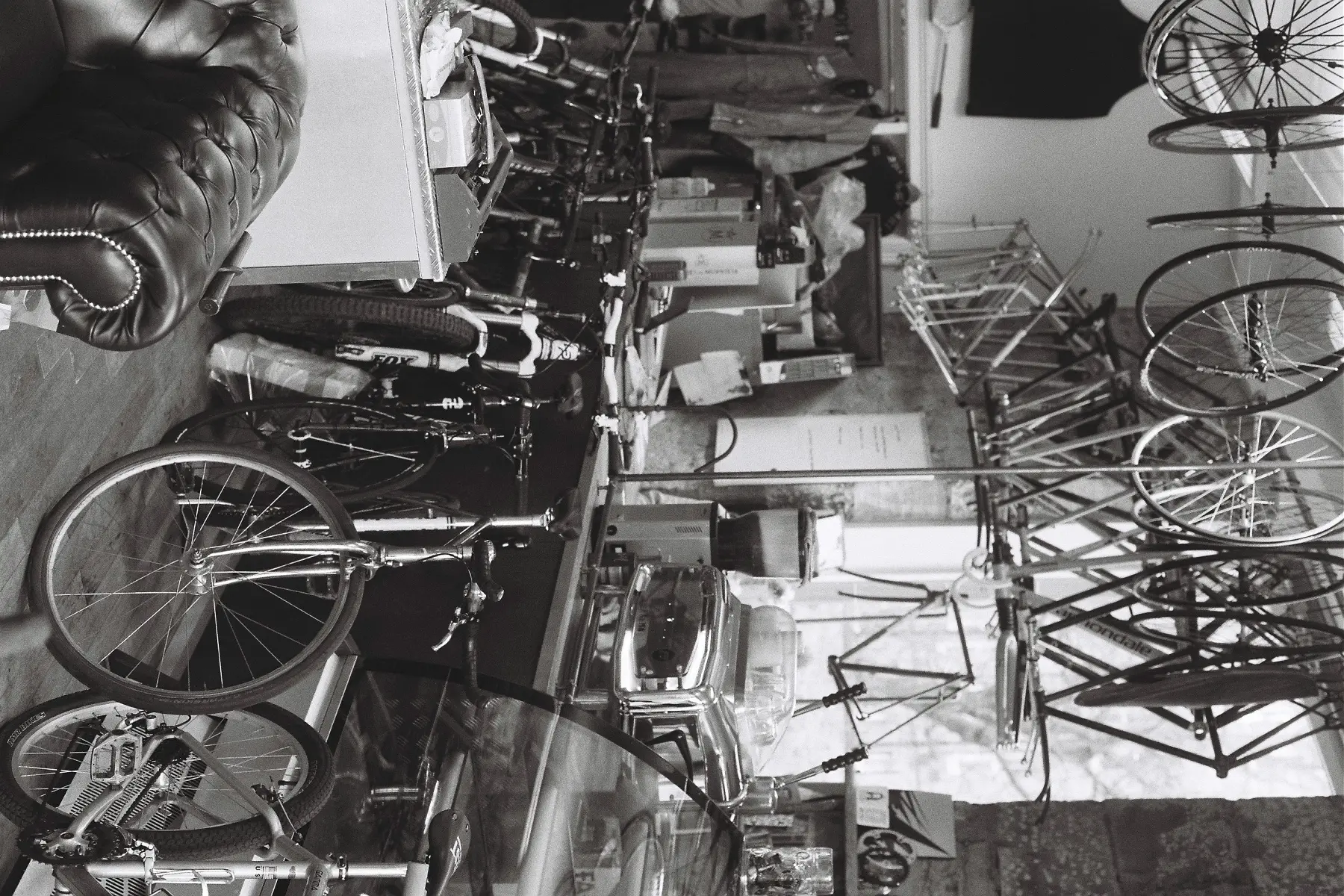
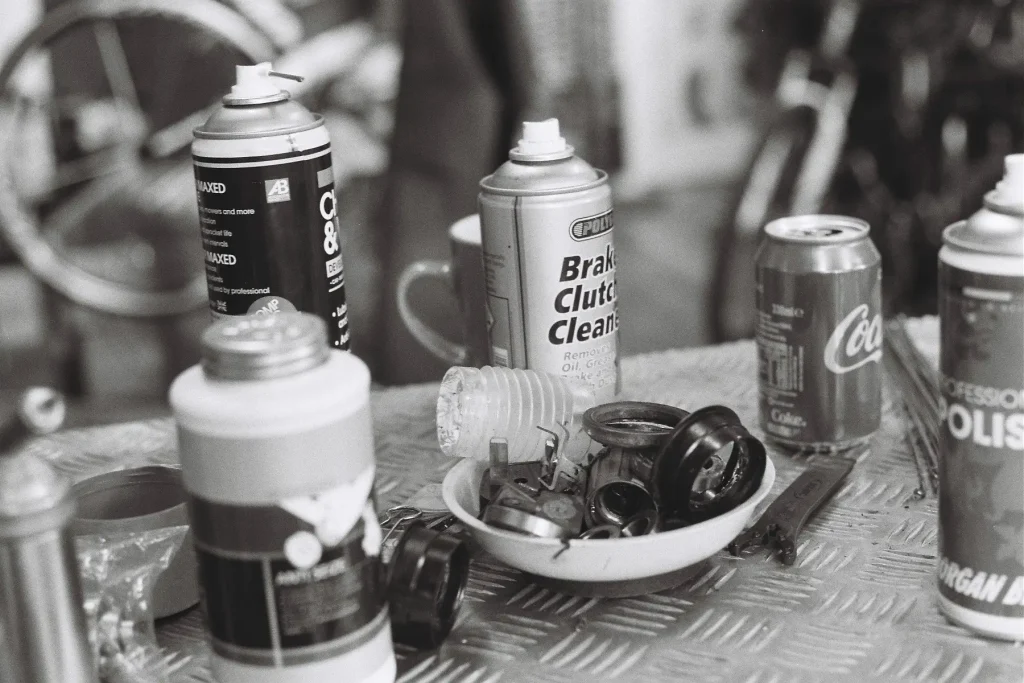
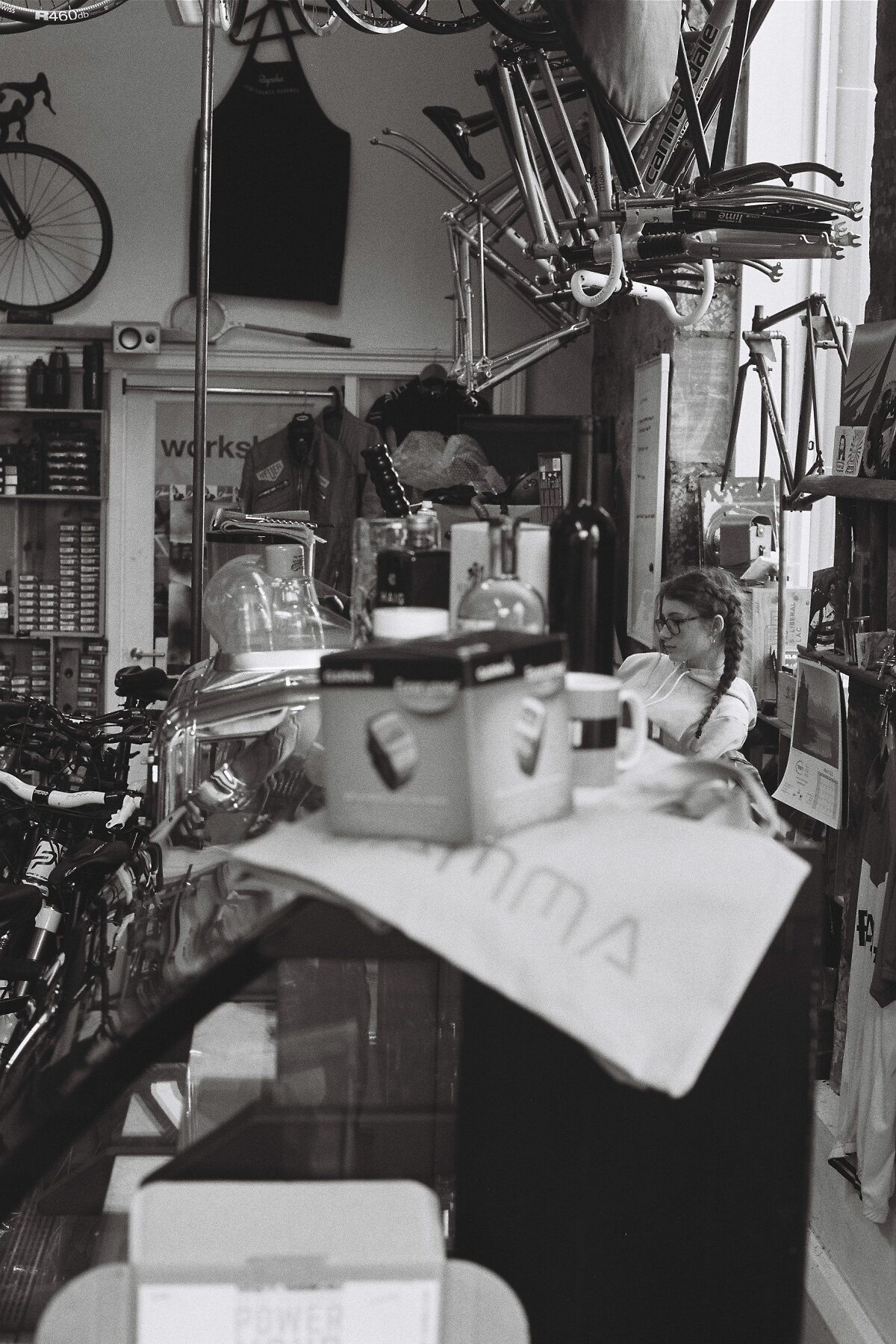
All was not plain sailing for 2 reasons. Firstly, I started to get the dreaded GAS and started to read reviews of other gear and lusting after other kit. What drew my eye first was a Nikon FM3A. I know there is a lot of hype about this camera, but I took the plunge and got one in silver from Japan complete with 50mm Nikkor 1.4 lens. It arrived and I was frankly blown away by the engineering quality of this camera which in my view easily meets or even exceeds Leica standards. It is a wonderfully tactile object and is clearly bullet proof and built for years of service. The aluminium shutter makes a most satisfying sound. But above all it makes taking pictures easy, allowing you to forget the camera and really concentrate on the workflow. Make no mistake if you need a workhorse that is perhaps the finest most refined expression of Nikon SLRs, this is it. It even works without a battery – handy if you are in the middle of nowhere.
Secondly the AE1 started playing up – the film advance just locked up. I changed the battery, nada. I sent it off to Pierro Pozella at PPP cameras asking him to try and sort out the problem and also do a full CLA, change the light seals and clean the viewfinder. When it came back it worked just fine. Really it was a marvel for such an old camera it was almost like new. I have started using it again, now with a 24mm 2.8 FD lens.
I took some photos with the FM3A at a local car rally – and here are a couple of samples. I love the look.
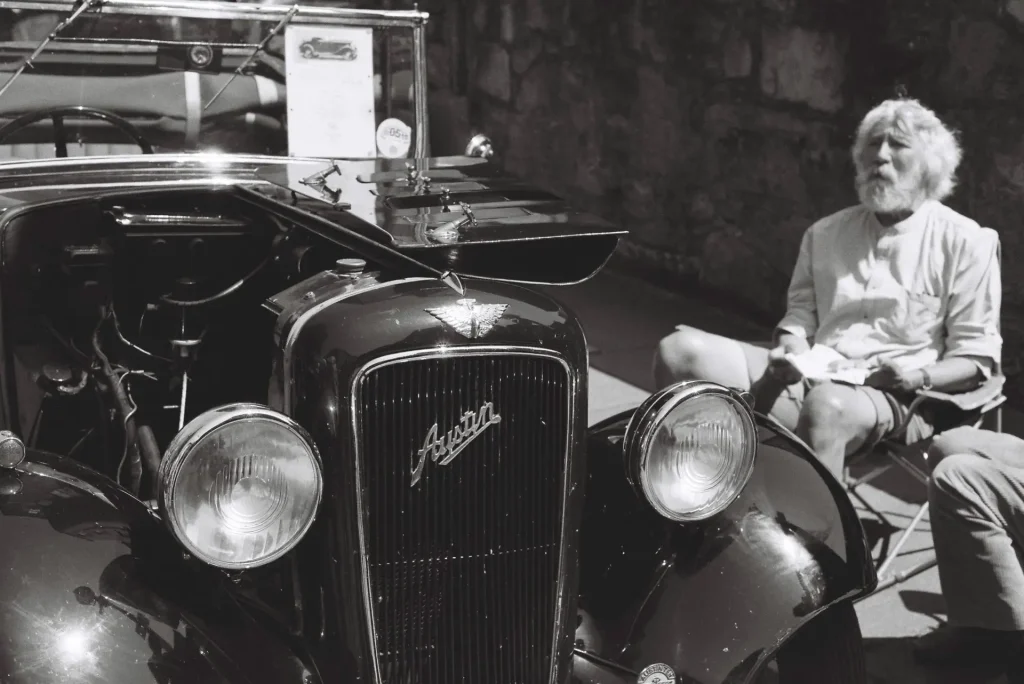
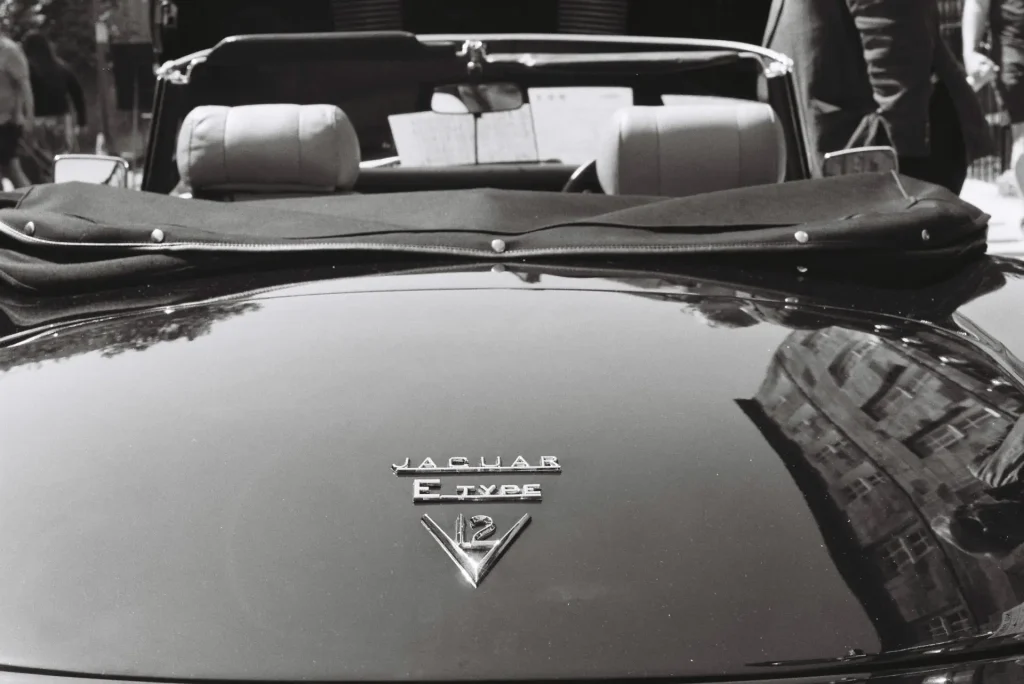
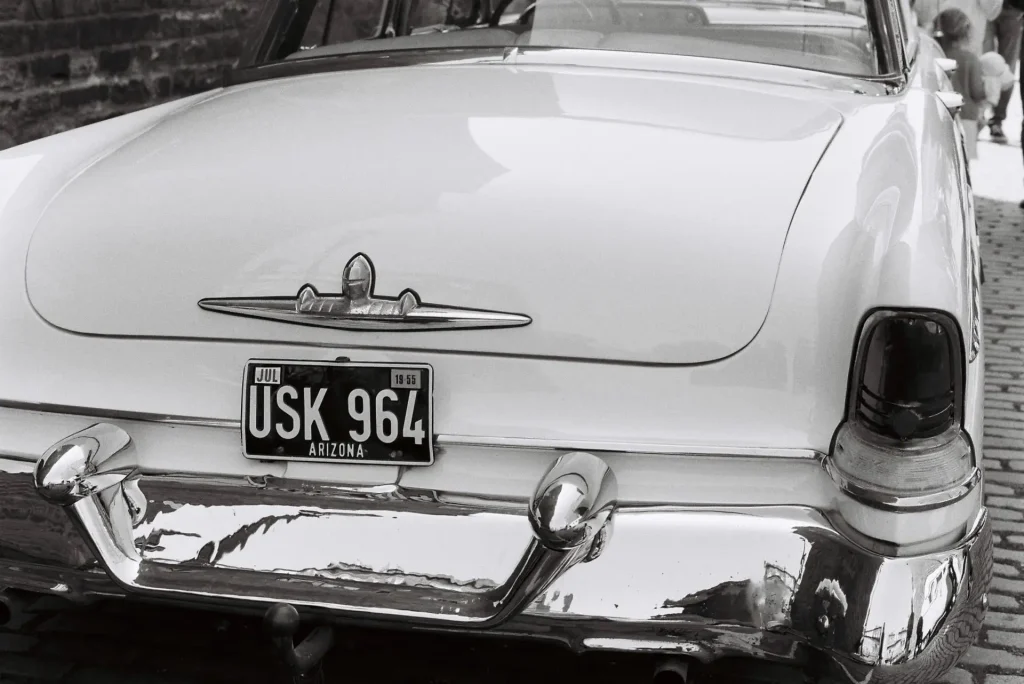
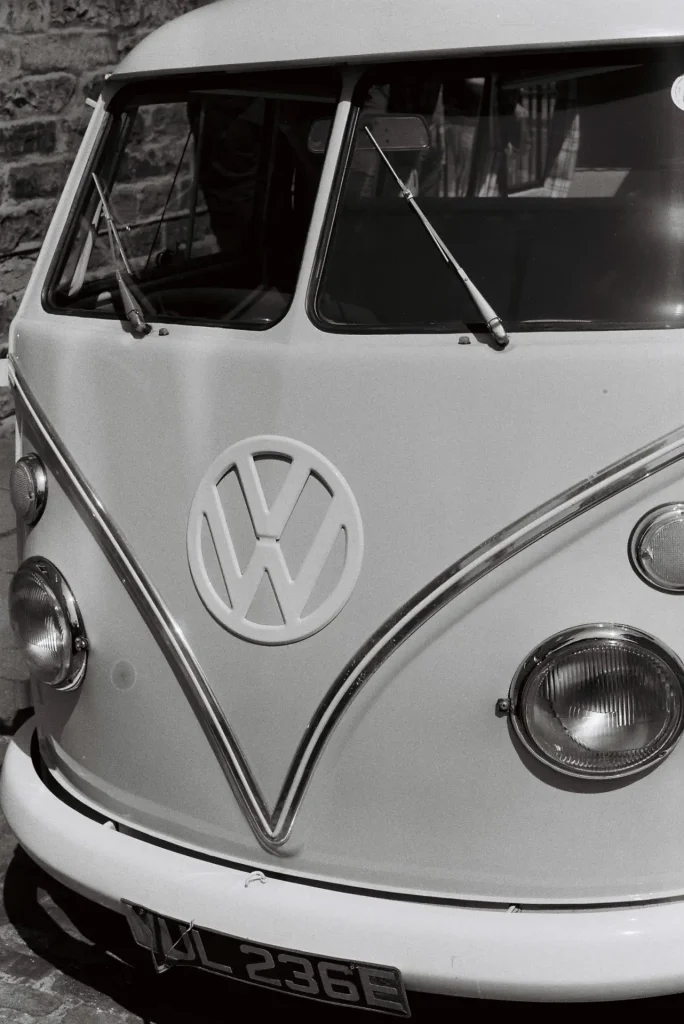
How can I sum up my experience with the two cameras? Well it’s the Ford Focus vs the Porsche here. But really it does not matter at all. What matters is the person behind the camera – both cameras can take great pictures. And at 1/10th of the price of the FM3A the canon AE1-Program is still a gem especially for beginners. And the film? It’s wonderful, very.
You may wonder if my GAS has now gone. Well for now it has, but not before I got myself a Contax G2. But that’s another story for another time. But remember it is taking photos that’s important, not Gas. Trust me.
Simon James Rikowski insta: simonjamesrikowski
Share this post:
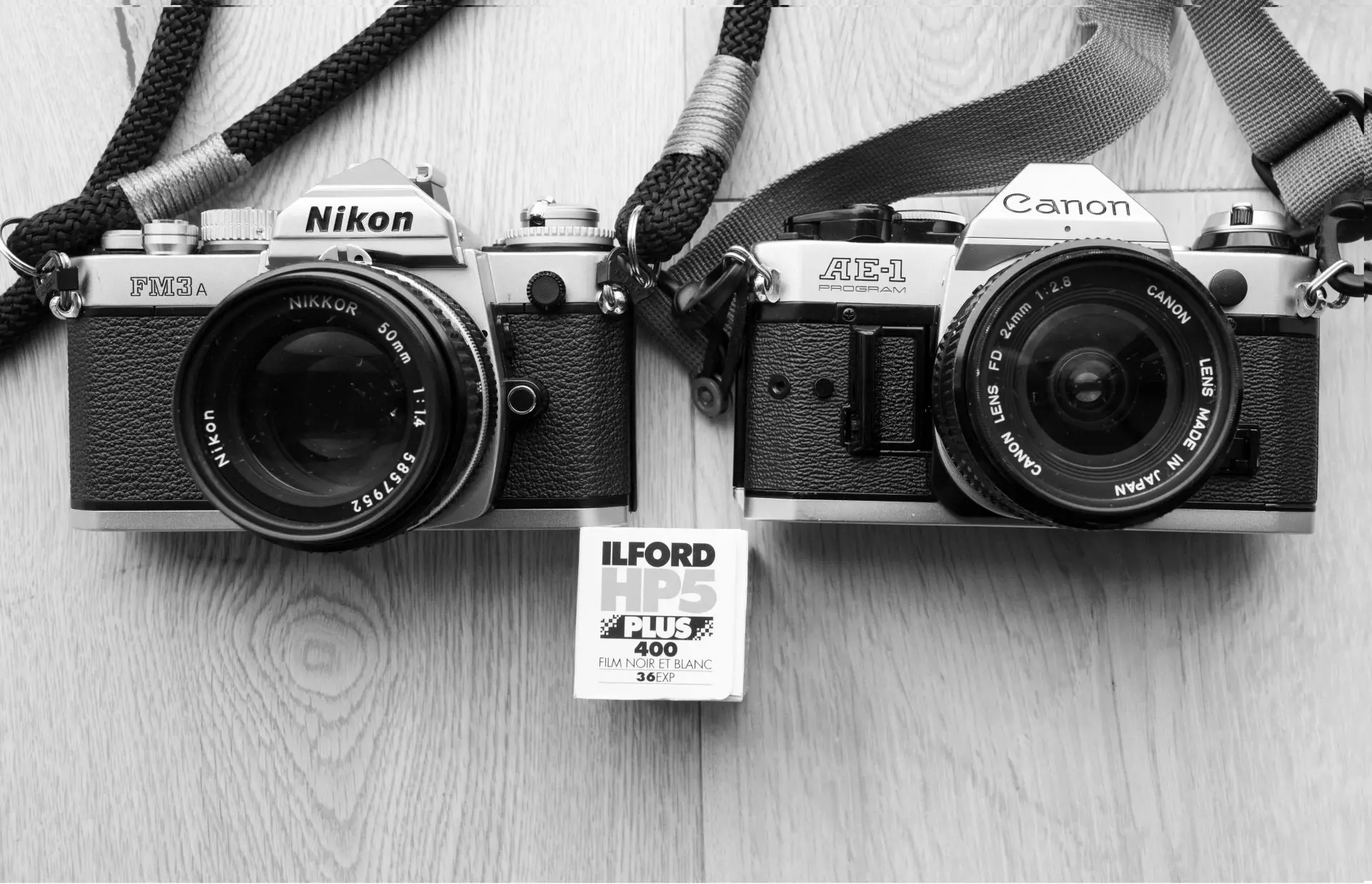








Comments
Peter Roberts on Returning to Film with a Canon, a Nikon and a Touch of GAS – By Simon Rikowski
Comment posted: 22/07/2021
You've ticked most of the boxes for me with this post. Film cameras, a proper bicycle shop, classic cars, thoughtful composition.
Don't worry too much about GAS, we all get it. As you rightly say, as long as it doesn't get the way of taking photos you'll be fine.
David Hill on Returning to Film with a Canon, a Nikon and a Touch of GAS – By Simon Rikowski
Comment posted: 22/07/2021
Lovely results, too. Keep it up.:)
John Tarrant on Returning to Film with a Canon, a Nikon and a Touch of GAS – By Simon Rikowski
Comment posted: 22/07/2021
Robin Gray on Returning to Film with a Canon, a Nikon and a Touch of GAS – By Simon Rikowski
Comment posted: 23/07/2021
Best wishes from a Fifer.